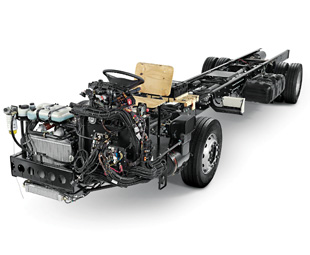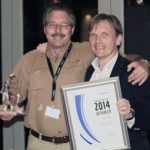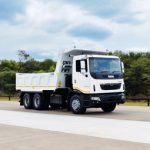Mercedes-Benz rocks it in Rio

FRANK BEETON reports on front-engined (and other) bus news from Mercedes-Benz Brazil.
Enthusiasm for front-engined bus chassis among South African operators is an established fact. This is mainly due to the relative lack of technical complexity, efficient engine cooling and suitability for operation on less-than-perfect road surfaces that are characteristic of that layout.
The inevitable trade-offs in the areas of chassis-frame height, narrow and steep entrances and greater interior noise have generally been deemed acceptable in the interests of greater reliability.
However, the global bus market has, in past decades, moved increasingly towards standardisation on rear-engined chassis and monocoque (chassisless) buses, and this has sometimes led to questions being raised over the continuing local availability of front-engined ladderframe chassis from major international manufacturers.
In the local market, long-time bus sales leader MAN has continued to produce and promote its Lion’s Explorer and Volksbus front-engined ranges, alongside similar products from Scania, Mercedes-Benz and VDL.
This may seem contrary to the global trend, but, over the past few years, we have also witnessed a welcome reawakening of interest in the front-engined configuration from the important bus markets of South America and India.
In Global Bus we have reported on some new model introductions from the likes of MAN, Iveco and Volvo in those markets, and have more recently noted new model launches from Mercedes-Benz’s Brazilian operation, which confirms that manufacturer’s continued commitment to the front-engined layout.
Mercedes-Benz first introduced its OF series of front-engined, ladderframe buses in the 1970s, as part of a successful strategy to break the historic dominance of British chassis manufacturers in bus markets over much of the developing world.
Since then, many thousands of OF series chassis have entered service worldwide, including South Africa, where the range continues today in the form of the OF 1726 and OF 1730 models.
Brazil is an important manufacturing base for the OF series, and at the FetransRio show, held in Rio de Janeiro towards the end of 2014, the company exhibited two new derivatives of its OF 1724 chassis; one equipped with an automated transmission, and the other with a dual-fuel version of its OM 926 engine.
The OF 1724 chassis with automated Mercedes-Benz G85 six-speed transmission has a hydraulic coupling transmitting drive from engine to gearbox, an overall length of 13,2 m, and a design gross vehicle mass – as indicated by its designation – of 17 t.
The Euro-5, 7,2-litre OM 926 diesel engine develops 177 kW (238 hp). This model is also available with full air suspension, making it suitable for city, charter or staff bus applications. Both the multi-fuel and dual-fuel version of the OM 926 engine, can operate on compressed natural gas (CNG), biodiesel or conventional diesel fuel, and tolerate up to 70 percent gas in the “mix”.
This dual-fuel option has been under test in Rio de Janeiro for four years, and Mercedes-Benz says it is to be made available for export to Argentina, Colombia, Mexico, South Africa, Indonesia and India.
Other Mercedes-Benz exhibits at the FetransRio show included the Superarticulado four-axle two-element articulated bus. It is suitable for bodywork with a total overall length of up to 23 m, with a capacity of more than 200 passengers, in low-floor and high-floor variants.
At the other extreme, was the 9 400 kg GVM LO 916 minibus, which is suitable for urban or short-distance intercity operation, with bodywork lengths ranging from 8 500 mm to 9 100 mm.
The 500 series long-distance bus or luxury coach chassis line-up appeared in both 6×2 RSD and 8×2 RSDD versions. Features of this range include: an engine of 304 kW (408 hp) output, eight-speed Mercedes-Benz PowerShift fully automated transmission, integral retarder, electronic stability program (ESP), electronic braking system (EBS), anti-lock braking system (ABS), traction control and disc brake fitment. The 500 series is suitable for both double-deck and low-driver coachwork configurations.
Published by
Focus on Transport
focusmagsa




